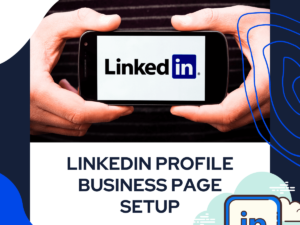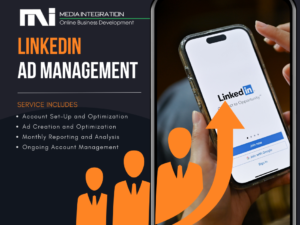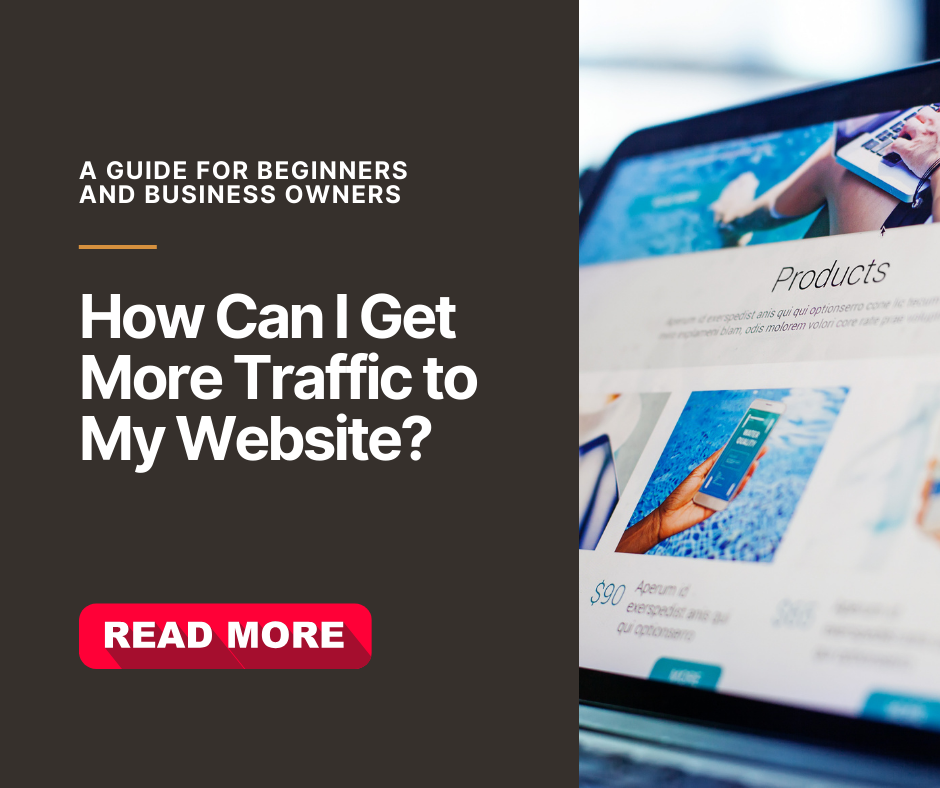Introduction to How to Start Digital Marketing
Hello, digital dreamers! Are you a newbie wondering how to start digital marketing? If yes, then you’ve come to the right place. Digital marketing isn’t just a buzzword; it’s a critical skill set that’s growing more crucial for businesses, freelancers, and pretty much anyone wanting to make a mark online. Globally, the numbers are staggering. According to Statista, digital ad spending reached an eye-popping $378.16 billion in 2020, and it’s not just a temporary wave; the industry continues to grow.
“But what about Canada?” you may ask. Great question! Canadians are exceptionally active online. In fact, according to eMarketer, digital ad spending in Canada is projected to reach $9.42 billion by 2024 with annaul growth rate of roughly 7%. It’s not just about international giants; local businesses in Canada are also increasingly moving their marketing budgets to digital platforms. And get this: According to research from the Canadian Internet Registration Authority (CIRA), 74% of Canadians spend at least 3 to 4 hours per day engaged in online activities. That’s a lot of eyeballs you could be reaching through effective digital marketing strategies!
So, whether you’re in Toronto trying to market a new cafe or in Vancouver aiming to get your freelance graphic design work noticed, understanding how to navigate the digital marketing landscape is invaluable. This blog will be your trusty guide, providing you with an easy-to-follow roadmap packed with real-world examples and statistics. Whether you’re a complete beginner or have some experience under your belt, we’ve got something for everyone.
So, ready to roll into the world of digital marketing? Let’s get started!
Step 1: How to Start Digital Marketing by Identifying Your Goals and Target Audience—Your North Star
Why Setting Goals is Your First Task in Learning How to Start Digital Marketing
If you’re pumped to kickstart your marketing journey but feel a bit lost, don’t sweat it. The first step in learning how to start digital marketing is actually super straightforward: figure out your goals and know who you’re talking to. Yep, it’s that simple but oh-so-crucial.
So, what could be your goals? For some, it might be increasing website traffic. For others, boosting sales or even something as intangible as raising brand awareness could be the endgame. Whatever your objective is, be as specific as you can. Instead of saying “I want more sales,” aim for a targeted goal like “I want to increase sales by 25% in the next quarter.” This clarity not only helps you but also makes it easier for any team members or collaborators to get on the same page.
Example: Joe’s Local Coffee Shop Aims for a 25% Sales Increase. Please note this is only an example of a fictious scenario.
The Goal Setting
Joe, the owner of a local coffee shop, decides he wants to ramp up his business. Instead of just saying, “I want more sales,” he sets a specific, measurable goal: “I want to increase sales by 25% in the next quarter.” This sets the stage for a focused action plan.
Steps to Achieve the Goal
Analyze Current Sales Data: Joe looks at his past sales records to understand customer behavior—what are the peak hours, popular menu items, and so on.
Identify the Target Audience: Joe realizes most of his customers are local residents and college students who come in for a quick cup before heading to work or school.
Promotional Offers: To attract this audience, Joe introduces a “Morning Rush Hour” discount—20% off on all coffees from 7 AM to 9 AM.
Social Media Marketing: Joe targets local residents and college students on Facebook and Instagram, announcing the “Morning Rush Hour” discount and other upcoming events.
Customer Feedback and Refinement: Joe keeps a close eye on sales data and customer feedback. Two weeks in, he notices that the muffins are a hit when paired with coffee. He starts promoting a coffee-and-muffin combo deal.
Engage with the Community: Joe collaborates with a local college for a small art exhibit in his coffee shop. This drives foot traffic and creates a sense of community.
Email Marketing: Joe collects email addresses and sends out weekly newsletters featuring special offers, events, and a loyalty card program.
Monitor and Tweak: Using simple analytics tools, Joe tracks which strategies are most effective and refines his approach accordingly.
The Final Result
By the end of the quarter, not only has Joe’s coffee shop sales increased by 30%—exceeding the original 25% goal—but he has also built a community around his brand. His shop has become a local favorite for both coffee and culture. Most importantly, he’s learned that a targeted approach, based on data and customer feedback, can yield astonishing results.
I Hope this fictious example shows you that achieving a specific sales goal involves a mix of strategies tailored to your audience, continuous monitoring, and a willingness to adapt and evolve.
Once you’re clear on your goals, it’s time to identify your target audience. Who are they? Where do they hang out online? What’s their age, and what interests them? Getting these details pinned down is critical. Take the skincare brand Glossier, for example. They initially targeted young, social media-savvy women and focused their entire strategy around them. And voila, they achieved a jaw-dropping $1.2 billion valuation! Yep, you read that right—billion with a ‘B.’
“But how do I figure out my target audience?” you may wonder. Start with market research. You could use online tools like Google Analytics to identify who is visiting your website or social media channels. Conduct surveys or even casual interviews with potential customers to understand what makes them tick.
The combination of clear goals and a well-defined target audience acts like your North Star, guiding you through the murky waters of digital marketing. Once you’ve got these two elements down pat, you’ll find that the rest of your marketing strategies will fall into place much more effortlessly.
Step 2: How to Pick the Right Platforms in Digital Marketing—The Playgrounds for Your Brand
Choosing Your Digital Marketing Platforms Wisely—Where Your Audience Hangs Out
Alright, you’ve got your goals and your target audience all sorted out. High five! 🙌 Now, the next fun part in your journey on how to start digital marketing is picking the right platforms. Think of these platforms as your brand’s digital playgrounds; you’ve got to choose the ones where your audience loves to hang out.
How Age Groups Matter
First things first, age groups play a significant role in this decision. Facebook, for instance, has a more mature audience, making it an excellent option for businesses with goals to achieve at the 30-50 age group. In contrast, Instagram and TikTok are like the cool kids’ hangout spots, super popular among those aged 18-29. According to Pew Research, 71% of 18-29-year-olds in the U.S. are scrolling through Instagram. So if you’re targeting younger folks, it’s time to get your Instagram game on!
Consider Your Product or Service
But hold on, age isn’t the only factor here. The nature of your product or service can also dictate the best platforms for you. For instance, if you’re a B2B business offering professional services, LinkedIn could be your goldmine for lead generation. On the other hand, if you’re into fashion or food, the visual-centric platforms like Instagram and Pinterest could be perfect.
Look at Your Competitors
Don’t forget to spy—ahem, I mean, do some competitive research. Look at where your competitors are active and where they’re getting the most engagement. This can give you a solid hint about where you might want to be.
Test and Learn
Now, don’t think you need to get this perfect from the get-go. Feel free to dip your toes into multiple platforms initially. Run some small campaigns, and see where you’re getting the most traction. Digital marketing is often about trial and error, so don’t shy away from testing and learning as you go.
Don’t Ignore Emerging Platforms
Last but not least, keep an eye out for emerging platforms. Remember, Instagram and TikTok were once new kids on the block, too. Being an early adopter on a platform that blows up can give your brand a significant advantage.
So you’ve picked your platforms and know where your audience spends their time. That’s a strong foundation. Next up, we’ll delve into a principle you’ve probably heard before but can’t afford to overlook: “Content is King, But Context is Queen.” Stick around as we explore how to balance powerful content with the right context to truly engage your audienc
Step 3: Mastering Content and Context—The Dynamic Duo in How to Start Digital Marketing Effectively
Content Quality and Context Relevance: Why Both Matter in Digital Marketing
So, you’ve nailed down your goals, you know your audience, and you’ve even picked out the platforms where you’ll shine. The next step? Understanding that while content is undoubtedly king, context is its queen. Let’s unpack that a bit.
The Power of Content
When we say “Content is King,” we mean that what you share with your audience—whether it’s blog posts, videos, infographics, or tweets—needs to be high-quality, valuable, and relevant. Your content is what will build trust, establish your brand’s authority, and ultimately drive customer action. So yes, it reigns supreme.
Why Context Matters
But hey, even a king needs a queen, right? Enter Context—the circumstances or settings where your content is presented. Understanding where, when, and to whom you present your content can make or break its effectiveness. It’s like serving a gourmet meal; presentation and timing matter just as much as the dish itself.
Customize According to Platform
Different platforms have different vibes, rules, and audience behaviors. Customizing your content to fit these unique environments is essential. Take Red Bull, for example. They use YouTube for their long-form, adrenaline-pumping videos, whereas their Instagram is filled with short, impactful visuals that grab your attention instantly. It’s the same brand but adapted to fit the platform’s unique characteristics.
Know Your Audience’s Behavior
Don’t just know where your audience is—know how they interact on different platforms. Are they scrollers, clickers, or watchers? For instance, Facebook users might spend more time reading a detailed article, while Twitter users are looking for quick, easily digestible information.
Test, Measure, Adapt
The great thing about digital marketing is the ability to tweak your strategy in real-time. Use analytics tools to see what’s working and where. Maybe your Instagram posts are getting a lot of engagement, but your LinkedIn articles not so much. This data will help you refine both your content and context for each platform.
So, you’ve seen how balancing quality content with the right context can set you up for success. But how do you know for sure that your strategies are hitting the mark? That brings us to our next crucial point—Step 4: Data-Driven Decisions. In the following section, we’ll dive into how to use hard data to inform your digital marketing efforts and really fine-tune your strategies. Stay with us!
Step 4: Making Data-Driven Decisions—Your GPS on How to Navigate Digital Marketing Successfully
Using Analytics Tools: Essential Skills in Learning How to Start Digital Marketing
Alright, you’ve set your goals, picked your platforms, and fine-tuned your content and context. Now comes the cherry on top: using data to drive your decisions. If digital marketing were a road trip, think of data as your GPS. It tells you where you are, where you need to go, and even helps you find the quickest route there.
The Power of Analytics
One of the coolest things about digital marketing is that nearly everything is measurable. Platforms like Google Analytics and Facebook Insights offer a goldmine of data. And the numbers don’t lie. Per a study from CMO by Adobe, businesses that allocate resources to analytics have double the likelihood of outdoing their rivals. That’s not just luck; it’s strategic planning backed by data.
Metrics to Monitor
Now, let’s get into the nitty-gritty. What should you be tracking? Key metrics like click-through rates (CTR), conversion rates, and customer acquisition costs (CAC) are essential gauges of your campaign’s health. If you’re new to these terms, don’t worry.
Click-Through Rates (CTR): This tells you the percentage of people who clicked on your content out of the total who saw it. High CTR usually means your content is appealing and relevant.
Conversion Rates: Simply put, this is the percentage of completed goals (conversions) against the number of visitors. If this is high, your campaign is doing its job effectively.
Customer Acquisition Cost (CAC): This shows how much it costs you to acquire a customer. Keeping this number as low as possible is the aim of the game.
Refine and Optimize
Here’s where the fun begins. Use this data to tweak your campaigns for maximum effectiveness. Is your CTR low? Maybe you need a catchier headline or a more appealing visual. Are you spending too much on customer acquisition? Time to look into more cost-effective marketing channels or refine your targeting.
Take Incremental Steps
Don’t try to overhaul everything at once. Start with one metric that needs improvement and focus on it. Once you see positive results, move on to the next. It’s all about incremental progress that accumulates into significant gains over time.
Armed with data and a mindset geared towards adaptability, you’re already on the right track for making smart decisions in your digital marketing journey. But the learning doesn’t stop here; the digital landscape is always evolving. That smoothly brings us to our next critical point: Step 5, Continuous Learning and Adaptation. Stay with us to understand why ongoing learning is not just an option but a necessity in digital marketing.
Step 5: The Importance of Continuous Learning and Adaptation in How to Start Digital Marketing—The Heartbeat of Long-term Success
Lifelong Learning: The Unsung Hero in Your How to Start Digital Marketing Journey
By this stage, you’ve done a lot: defined your goals, selected your platforms, mastered your content, and have even gotten a grip on how to use data wisely. But here’s the kicker: digital marketing is an ever-evolving beast. What worked yesterday might not work tomorrow, making continuous learning and adaptation your lifeline.
The Ever-Changing Landscape
First off, let’s address the elephant in the room. Algorithms shift more than the sands in a desert, and consumer preferences are about as steady as a leaf in the wind. What does that mean for you? Staying updated isn’t a luxury; it’s a requirement.
The Tools for Success
Thankfully, the digital age has made learning easier than ever. There’s a wealth of resources out there, from online courses to webinars and podcasts. And guess what? It pays off. According to Moz’s 2018 report, marketers who invest in updating their skills are 75% more likely to succeed than those who don’t. So, consider making learning a part of your daily routine.
The Power of Adaptation
Continuous learning isn’t just about acquiring new information; it’s also about knowing when to pivot your strategy. Sometimes the data will show that what you thought was a home-run campaign is actually more of a base hit. The ability to adapt, backed by what you’ve learned, is priceless.
Make a Learning Plan
Given the importance of ongoing education, it’s wise to set aside time and resources for it. Whether it’s allocating an hour a day to read up on industry trends or dedicating a portion of your budget to take a specialized course, plan for it. That way, learning becomes a routine, not a one-off event.
So, with your commitment to ongoing learning and adaptation, you’re not just surviving the digital marketing game; you’re thriving. And that’s a wrap on our steps for getting started in digital marketing. Trust us, if you pay attention to these key areas, you’ll be well on your way to becoming a pro.
Your Complete Roadmap on How to Start Digital Marketing—Ready, Set, Go!
Final Thoughts: Your Digital Marketing Journey Starts Here
We’ve come a long way together, haven’t we? Starting a career or even a side hustle in digital marketing might have seemed like climbing a mountain at first. But as you’ve seen, with the right steps in place, it’s more like a scenic hike—with challenges, sure, but also with lots of beauty and rewards along the way.
The Five Pillars
Let’s do a quick recap:
- Identifying Your Goals and Target Audience: This is your North Star, guiding every decision you make.
- Choosing the Right Platforms: Pick your battlefield wisely. You can’t win if you’re fighting on the wrong front.
- Mastering Content and Context: Remember, it’s not just what you say but also how and where you say it that matters.
- Data-Driven Decisions: Think of this as your GPS, ensuring you’re on the quickest route to your objectives.
- Continuous Learning and Adaptation: This is your fuel, keeping you going no matter what twists and turns come your way.
Endless Opportunities Await
What’s particularly exciting is the endless world of opportunities that digital marketing opens up for you. You could go from managing social media campaigns to becoming an SEO specialist, or even starting your own digital marketing agency. The sky’s the limit!
Take the First Step
So why wait? Your journey in digital marketing is a treasure trove of learning, experimentation, and, most importantly, growth. Sure, you’ll face challenges, but armed with this roadmap and a willingness to learn, you’re already miles ahead of the curve.
So there you have it—a complete guide to starting your digital marketing journey. From setting goals to continuously learning and adapting, you’re now equipped with all the essentials. Ready to take on the digital world? We thought so!







